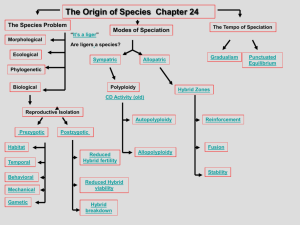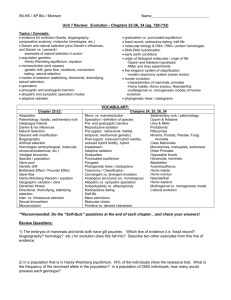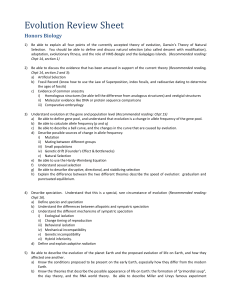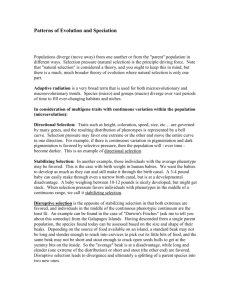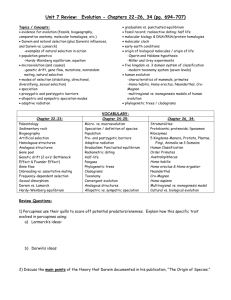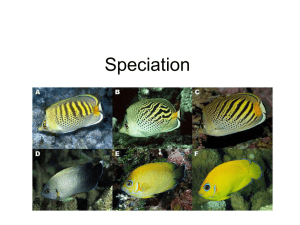Mechanisms of Speciation (Chap. 20)
advertisement
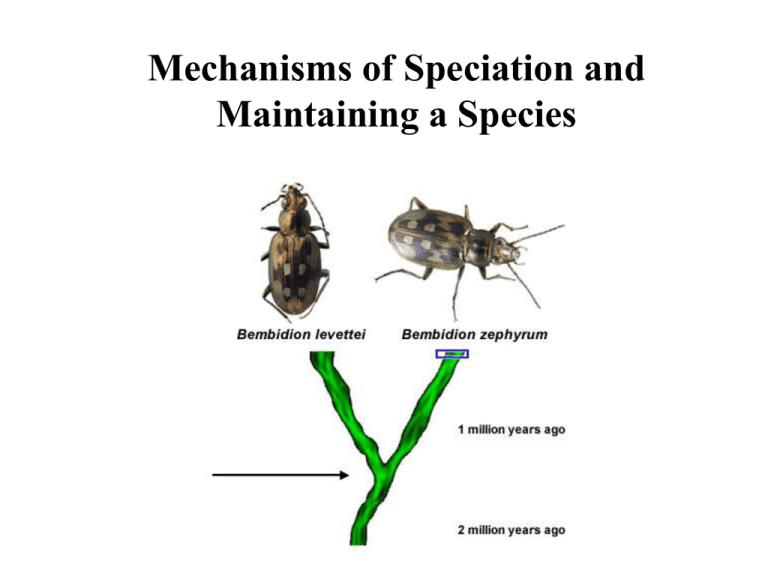
Mechanisms of Speciation and Maintaining a Species Two methods of speciation (formation of a new species) based on geography 1. Populations are geographically isolated • allopatric speciation – a geographic process splits a population so they evolve separately and no longer interbreed • often results in endemic species (species that are found nowhere else) • two main ways populations become geographically isolated: – individuals end up in new hospitable place and survive resulting in new species – the slow process of geological change that divides a group such as continental drift • Grand Canyon squirrels (Fig. 20.11 in text) • Snapping shrimp in Central America 2. Populations are overlapping (not geographically isolated) • sympatric speciation – occurs in populations occupying the same habitat – Maggot flies – one infects hawthorn trees and the other apple trees, resulting in two diff. sp. Gene flow has been reduced between flies that feed on different food varieties, even though they both live in the same geographic area. Reproductive Isolating Mechanisms / Barriers Between Gene Pools • means by which species maintain their integrity and thereby continue as a separate species even though they live in the same habitat • normally do this by preventing hybrids from forming (prezygotic) or ensure that they fail to be successful (postzygotic) Prezygotic barriers – mechanisms that prevent formation of a zygote 1. Ecological barriers – two sp. share same territory but occupy different parts of it – Maggot flies – one sp. infects hawthorn trees and the other apple trees – lions and tigers (also a postzygotic barrier) 2. Behavioral barriers – behavior of two sp. is very different and therefore don’t breed – lions/tigers social tendencies – different mating time – Homo sapiens behavior may have exterminated other Homo species 3. Mechanical barriers – genitalia don’t fit or certain insects only pollinate specific plants because they only fit/visit those plants 4. Gametic barriers – even if two different species did mate, fertilization of egg won’t take place because incompatibility between egg and sperm – may have prevented recent Homo sapiens (46 chromosomes) from successfully breeding with older hominids (48 chromosomes) Postzygotic barriers - mechanisms that act after a zygote is formed to prevent the survival of the hybrid species 1. Hybrid inviability – zygote dies because of genetic differences – may have prevented recent Homo sapiens (46 chromosomes) from successfully breeding with older hominids (48 chromosomes) 2. Hybrid sterility – first generation survives but cannot reproduce. – ex. female horse + male donkey = mule – ex. lion + tiger = ligers or tigons 3. Hybrid breakdown – first generation survives and reproduces, but second can’t produce offspring





